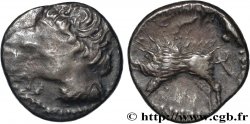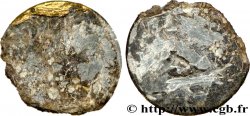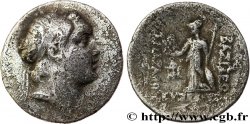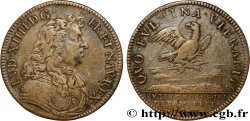v15_1371 - HELVETII (Currently Switzerland) Statère de Philippe II, imitation celtique (fourré)
MONNAIES 15 (2002)
Starting price : 115.00 €
Estimate : 400.00 €
Realised price : 115.00 €
Number of bids : 1
Maximum bid : 125.00 €
Starting price : 115.00 €
Estimate : 400.00 €
Realised price : 115.00 €
Number of bids : 1
Maximum bid : 125.00 €
Type : Statère de Philippe II, imitation celtique (fourré)
Date: Ier siècle avant J.-C.
Metal : lead
Diameter : 18 mm
Orientation dies : 8 h.
Weight : 4,00 g.
Rarity : R3
Coments on the condition:
Ce noyau de plomb était recouvert d’une pellicule d’or, encore visible sur la tranche. Le flan est très dégradé et présente d’importantes échancrures. Le métal est “patiné” avec des nuances de blanc et de gris. Les reliefs sont très nets, surtout au revers, mais de lecture difficile en raison des nuances colorées
Obverse
Obverse legend : ANÉPIGRAPHE.
Obverse description : Tête laurée à droite aux mèches ondulées, imitant la tête de Philippe II.
Reverse
Reverse description : Bige à droite. Les chevaux bondissant, avec un canthare sous les pattes avant. L'aurige au-dessus de la roue du char, tenant un fouet. Légende au-dessous du bige, mais pas de ligne d’exergue.
Reverse legend : fILIPP.U
Commentary
Cette très intéressante monnaie constitue un exemple parfait des premières falsifications monétaires. Le canthare (un des symboles les plus représentés) est bien visible sous les pattes avant. Semble manquer à toutes les publications consultées et être de la plus grande rareté.
This very interesting coin is a perfect example of early monetary forgery. The kantharus (one of the most commonly represented symbols) is clearly visible under the front legs. It appears to be missing from all the publications consulted and is extremely rare.
This very interesting coin is a perfect example of early monetary forgery. The kantharus (one of the most commonly represented symbols) is clearly visible under the front legs. It appears to be missing from all the publications consulted and is extremely rare.








 Report a mistake
Report a mistake Print the page
Print the page Share my selection
Share my selection Ask a question
Ask a question Consign / sell
Consign / sell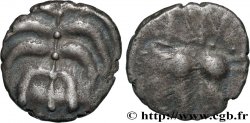
 Full data
Full data